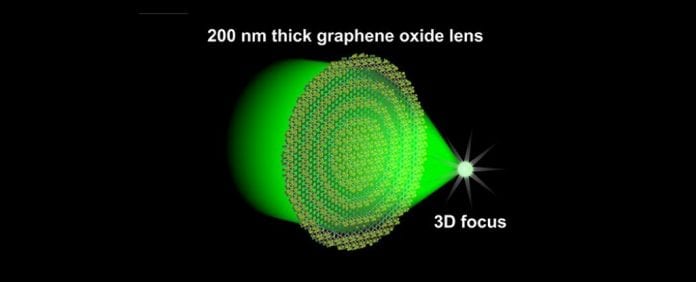Table Of Contents
Graphene lens is the latest technology that could allow future computers to start processing data at the speed of light
Graphene is 300 times thinner than a sheet of paper and lighter too, so its advantages are evident
Graphene lens definitely features several properties that will allow it to become the cornerstone of optical computing. This lens is 300 times thinner than a sheet of paper and weighs in at just 1 microgram. These two properties make it small enough to split a beam of single photons, and this is something that is going to be extremely critical if we want to see the future optical computing processing data at the speed of light.
Optical computers require devices called photonic chips, which store information as photons rather than electrons, and allow that information to move at light speed. NASA has already taken advantage of the technology, and thanks to several research and implementations, this technology is getting better and impressive by the day.
However, there are several obstacles that researchers will have to surpass, and one of them is having lenses thin enough to split beams of light and divert them around the chip.
Attempts to make these lenses in the past have required tons of funds, along with expensive and materials such as gold, but researchers at Swinburne University of Technology in Australia have managed to find a working solution.
They were able to produce a lens using graphene oxide that is not only thin enough to overcome the diffraction limit, but is also cheap, strong, flexible, and easy to produce. According to a study published in Nature Communications about graphene lens, the following has been stated on how researchers are improving the technology even further.
“Why does that matter, you may ask? Well, think of it this way: the new lens could be used to build devices capable of viewing, manipulating, monitoring, and trapping the tiniest particles in real time. In other words, it has the potential to revolutionize the technology used in medical diagnosis and treatment, imaging, sensing, and even computing.”
Optical computing is not the only application where this research will come handy. Products like smartphones could have their size and weight reduced, and could eventually get rid of the smartphone camera hump that we see so prominently in mobile devices. Additionally, graphene lens research could also pave the way for medical research and imaging.
Currently, this tech will also be able to get used in the production of nanosatellites to make them lighter, and better at focusing on Earth. Since regular satellites cost a lot more, nanosatellites will be able to perform the same feats as regular site aerial machines, but will go extremely easy on the overall manufacturing and deployment costs.
Looks like we will get to hear more about this as graphene lens research will obviously show fruitful results in the future.

